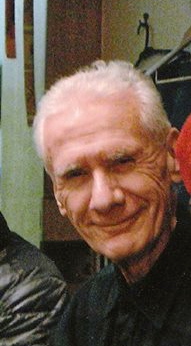
GP - “Thank you, Babs, for inviting me. Cozy place you have here. This morning in Sapporo, Japan, it’s a beautiful, cold day and the snow is a brilliant white in the sun.”
1 – Now, George, this is where you get the opportunity to order up anything you fancy from the menu. And since you’ve come such a long way I’ll make sure you get double helpings.
GP - “Coffee (black) and a chocolate chunk scone if you have one, please.”
2 – I know you’re originally from the USA, George, but perhaps you’d like to spend a few minutes giving us a little more background about your life. Were you always a writer? Do you have a secret skill or hobby that we need to know about? And how did you end up in Japan?
GP - “I grew up in Seattle, then lived in several different places (Oregon, California, Illinois, Minnesota, then back to Seattle in 1984, where my wife and I lived until we moved to Japan in early 2008. I’ve been writing since the late 1960s, squeezing it in around a busy career in the mental health field as a clinical social worker. I retired from that at the end of 2007. Why Japan? My wife is from here, and wanted to go back home after I retired. So we sold our home, flew to her home town in Hokkaido, found a place in Sapporo, bought it, and moved. Couldn’t be happier.”
3 – What brought you to writing? What was the first thing you had published and how did you go about it?
GP - “My 7th grade English teacher gave me high marks for a story I wrote for a class assignment, telling me that I had a talent for writing. That was in 1947. I didn’t do anything with it until the mid 1960s, when I was seized with the desire to begin writing. Things progressed from there. The first thing I had published was a short story, “Jonah’s Birth”, published in The South Dakota Review, a literary journal. Frederick Manfred, a well-known upper Midwestern novelist, read it and recommended that I send it to their editor, which I did. After that I wrote and published an article about Henry Miller’s work. Fred Manfred became my mentor and guide in those early years.”
4 – Are you a disciplined writer, George? Do you get carried away with the latest project to the exclusion of everything else, or do you flit from one to the other as the mood takes you? Do you have a study or place of solitude where you write, or are you the ‘back of an envelope’ kind of guy?
GP - “I write something every morning, usually focusing on one main project at a time, such as a specific book, poem or story. Right now, I’m putting together a short story collection which I hope to publish later this year. I’m also working on a nonfiction book on addiction and recovery, which is a carry-over from my profession and my personal life (I’m a recovering alcoholic; quit drinking 35 years ago). I also blog, which satisfies my desire to share my thoughts on issues and interests, poems, snippets, etc., with others.
“I’m fortunate to have a study here in our little home, as I did in our Seattle home. I don’t write well when I’m surrounded by other people talking and doing other things. This way I can also have a messy desk, and other essentials, like a place for pens, pencils, and books that I often reference for details and inspiration (I keep all of my poetry books nearby so I can read them when I feel the urge).
5 – Where do you take your inspiration from?
GP - “People, incidents, dreams. Life presents an endless supply of stories. My novella, “The Old Man and The Monkey” came from a dream I had in 2006 about a big Japanese monkey. Since I’d never had a dream about a monkey before, and hadn’t been thinking about monkeys, I wondered about the dream. So I “asked” the monkey why he’d dropped around. The result is the story about an elderly Japanese man and the big monkey that, much to the consternation of his wife and neighbors, becomes his good friend and companion. I listened, and he “told” his story. Once when I tried to expand the story, my mind went blank and nothing happened. Expanding it would have ruined it. I’ve learned to listen to my characters and allow them to tell their story through me. May sound weird, but, hey, I’m a writer, right?”
6 – I love to genre hop, how about you? Do you write in a specific genre? Which is your favourite and why?
GP -“Interesting question, Babs. Prior to publishing my first two books (“Grandfather and The Raven” is the second), I’d never given a thought to genres. I just wrote books that I hoped people would find interesting. I suppose both books fit in “General fiction” or “literary fiction”, though both have been identified as “children’s literature. i see them as fables (especially the one about the old man and the monkey). A favorite genre? I don’t have one. I read what I find interesting in a broad selection of genres.
7 – Is there a particular genre or type of scene that you would avoid and if so why?
GP - “Sex scenes; I’m really awful at them. Attempts send my wife to rolling about on the floor holding her abdomen which is bouncing up and down as tears of mirth spill into her ears). Romance is another subject I’m not especially good at writing about, though there is a budding romance toward the end of a new novel about Mexico City, so perhaps I’m not totally hopeless on the subject.”
8 – As a child which was your favourite book? Were you read to as a child and did that develop your love of books? Do you have a favourite book and author now? What are you reading now?
GP - “What comes immediately to mind is Edgar Rice Burroughs series about John Carter and Mars. Couldn’t get enough of them. Read them again and again, to the point that, as a child, on a clear night when I could see Mars in the night sky, there I’d be in our front yard with my arms raised toward Mars waiting to be lifted up and planted on the Red Planet. I quit that when the thought dawned on me: “What if I can’t get back?” Horrors! That put an end to that (but not to reading those books.) I also liked historical fiction, especially those written by Louis Muhlbach about Napoleon and Josephine, Henry the Eighth, and so forth.”
9 – Promotion and marketing is the bane of most writers’ lives. I know you’re a successful blogger, does this help you reach your readers and promote your work? Do you have any particular tips that you can share with us?
GP - “Oh, my! Marketing is something I’m learning a lot about, I belong to several helpful Facebook groups and mine books and articles on the subject. Since I’ll be much more involved with marketing my new books, I’m taking tons of notes, being much more active in Facebook groups and Twitter, and paying attention to what I learn. My work there will sharply increase as my new books come out this summer and beyond.”
10 – Tell us a little about the books you currently have published.
GP - “The Old Man and The Monkey.” This is a fable about friendship, about Genjiro Yamada and his wife, who live in a tiny village in Hokkaido, Japan’s northernmost prefecture. They have lived in the village for fifty years. Genjiro has a favorite place to sit that he calls his “sitting place,” a broad, flat stone on a little rise from which he can view and meditate upon the broad, lush valley and its river below and the mountains rising beyond. There is a forest nearby, in which a tribe of monkeys (not native to Hokkaido) are alleged to live. Legend has it that, whenever villagers have sought to go deep into that forest to dig for mountain potatoes and forage for mushrooms, the monkeys attack by throwing things at them from the trees and chattering ferociously. One day, while sitting and gazing out over the valley, a very large old monkey walks up, stands and gazes at him, then sits down on the stone next to him. Genjiro has never seen such a large monkey before, and is somewhat anxious, even though it is clear that the monkey means him no harm. After thirty minutes, the monkey gets up, looks Genjiro in the eyes, and leaves. This scene repeats itself several times a week. When Genjiro’s wife and the villagers find out about it, they are upset, especially when Genjiro names the monkey Yukitaro (“snow monkey” in Japanese). Friendships with such an alien creature is frowned upon. But when Yukitaro shows his kindness to his human friend and, ultimately, to the villagers, they are overwhelmed.
“Grandfather and The Raven” is about a Sapporo grandfather and the big raven that becomes his friend and companion. “Sir Raven” (as Grandfather calls him) is a bit of a comic figure who enjoys pulling Grandfather’s leg, chases away vicious dogs, and is a pretty likeable guy. The raven is one of my favorite characters. He almost always gets his way, he has a wicked sense of humor, and he’s quick to rescue people when called upon. Yep, Sir Raven’s my kind of guy!
11 – Can you give us a little hint at what you have planned next and when it might be available?
GP - “‘The City Has Many Faces: A Love Story About Mexico City” will be available late this summer. As the title says, it’s a love story about Mexico City, told through the lives of its citizens and history. I lived in Mexico City in 1973-74, fell in love with it, and the novel is the result.
“‘Bear, the story of a boy and his very unusual dog”. Previously published by Taylor Street Publishing, it will be published by Tortoise & Hare Publications sometime this summer.
A third book that I hope to have completed and published before the end of the year is a nonfiction book, “Returning to the World From the Crazy Land of Addiction.”
12 – And tell us even more about the one you’ve brought with you.
GP - “It’s ‘The Old Man and The Monkey.’ Having lived in the village for over fifty years, Genjiro and his wife Harue are respected elders. When a friendship develops between Genjiro and a very large monkey, everyone is thrown into a tizzy, except for one little girl, who’s convinced that the monkey is really a little old man dressed up like a monkey. When the monkey, whom Genjiro has named Yukitaro, shows up at their house and begins helping Harue with her garden, and brings them a huge long mountain potato that one villager mistakes for a club (“He’s going to kill them! I’ve seen him!”), the whole village shows up, ready for a fight. When they see that the “club” is really a huge mountain potato, they all laugh and go home. And then, one day, they really see what the gift is that Yukitaro has brought to them all.”
13 – Pick one of your characters and sell him/her to us in twenty words or less.
GP - “Yukitaro: he’s a shaman, a being that just comes along one day, says little but does much in spreading kindness around.”
14 – While I top up your coffee would you like to read a short excerpt from your chosen book?
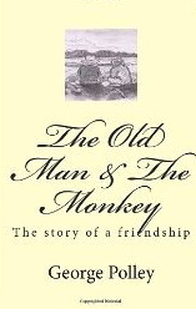
In a small park near one of the rivers that run through the city of Asahikawa, Hokkaido, there is a bronze statue of an old man and a monkey seated side by side on a wide flat stone looking out over the river and the mountains. The monkey is bigger than ordinary snow monkeys; the top of his head reaches to the old man’s shoulder.
Looking at the bags under his eyes, one can see that the monkey, like the man, is elderly. Affixed to the base of the statue is a bronze plaque that reads: “Genjiro and Yukitaro.” These two old friends sit and warm themselves in silence as the years and seasons pass.
As Long as long as the statue has been there, people passing by have paused, wondering how a monkey and a man could become friends because, as everyone knows, monkeys are pests and can be dangerous when humans get too close. Some people tell each other that such a friendship is unnatural, and that because it is unnatural, is impossible. Others believe that Genjiro and Yukitaro are characters that the artist made up. But everyone agrees that the statue is appealing, because the two old friends have such an air of tranquility and peace about them that people come and sit down next to it to enjoy their lunch, or to just sit quietly and look out at the river and the mountains, later commenting on how peaceful the experience was.
So it is that the old man and the monkey receive a constant stream of visitors who sit and enjoy their company in silence and take something of them away to warm themselves.
No one believes the old man and the monkey were real; but I know that they were because the old man was my grandfather, Genjiro Yamada, and Yukitaro was his companion and friend for the last five years of his life.
Now is the time for me to tell their story and reveal for the first time how an improbable friendship like that between a man and a monkey happened, how it was good, and how it ended.
Amazon.com
Amazon UK
George's Website
And finally, George, a little game that I hope all my guests will contribute to. Can you give me 100 words of your choosing to contribute to The Story So Far and to follow on from last weeks guest? Your last line will be picked up by the next guest... and so on:
‘Oh, no, my pretty one! Too late for that!’ Then, quite suddenly, a great well of resolve rose up in her. “Not too late!” she heard herself shout; “Not too late, ye daemon!” With strength she didn’t know she had, she threw off his hand and pushed, sending him reeling back. Then, quick as lightning, she was through the door. Slamming the inner bolt into the locking mechanism, she looked wildly about the room. All she needed to do was find the key. But where? From the other side of the door came a growl: “Ye canna get away!” Then the door crashed down, and the furred beast was …
Thank you, George. It was a real pleasure to chat with you. What an interesting life you've led. I hope to see many more of your books in the coming months and wish you well with all of them.
Babs x


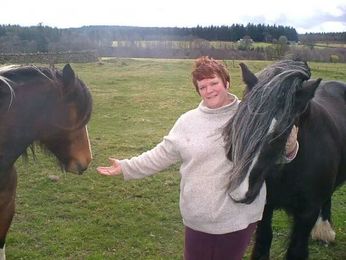
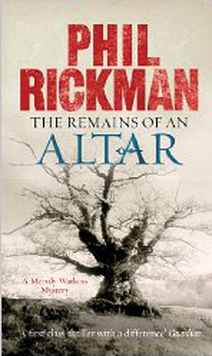
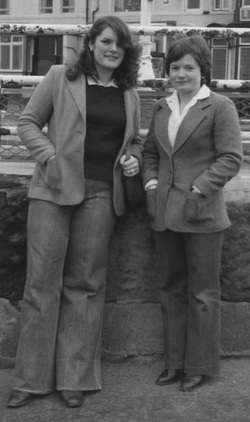

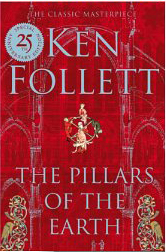
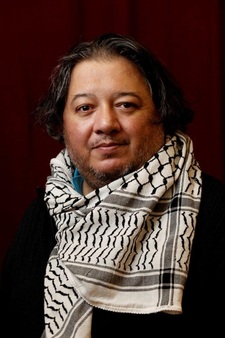

 RSS Feed
RSS Feed
